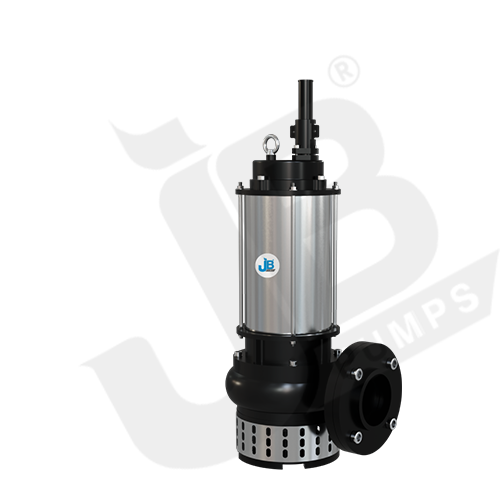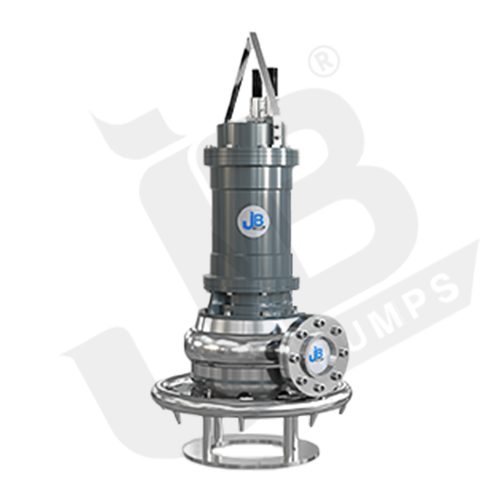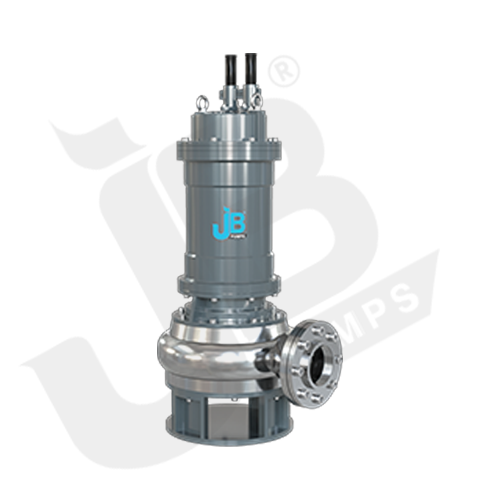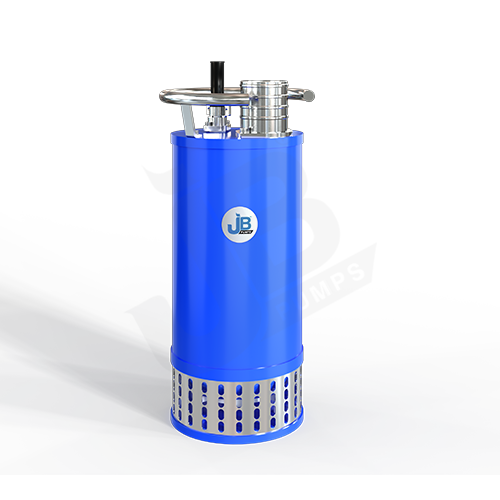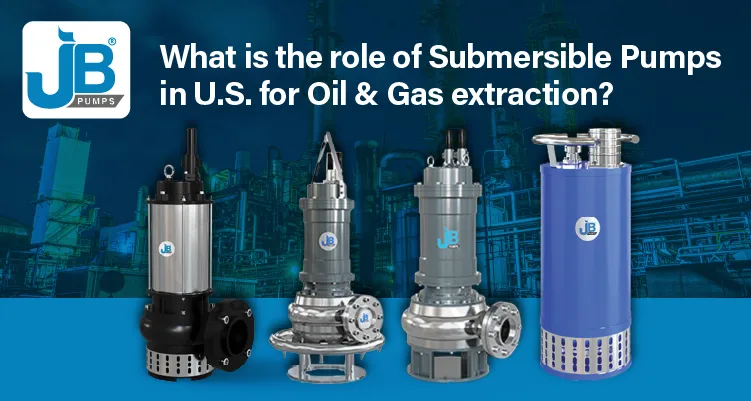
Submersible pumps are the driving force of the U.S. oil and gas industry, working thousands of feet underground to lift hydrocarbons to the surface. In an industry where over 90% of wells require some form of artificial lift to remain productive, these powerful systems are not just an option they are essential for maximizing recovery and ensuring economic viability.
At JB Pumps, we have spent years engineering high-performance submersible pumps for the world's toughest industrial applications. From handling abrasive mining slurries to corrosive chemical waste, we understand what it takes to build a pump that doesn't quit. That same commitment to reliability and performance is crucial for success in the demanding environment of oil and gas extraction.
What Are Submersible Pumps in Oil & Gas and Why Do They Matter?
In the context of oil and gas, submersible pumps are a critical category of artificial lift technology designed to operate while fully submerged deep within a wellbore. Unlike surface-mounted systems, these units combine a high-power motor and a multi-stage pump into a single, robust assembly.
Their importance cannot be overstated. When a reservoir's natural pressure declines, production slows to an uneconomical trickle. A submersible pump acts like a powerful booster engine, adding the necessary energy to lift thousands of barrels of fluid to the surface each day. They are the key to unlocking production from deep wells, unconventional shale plays, and mature fields across the United States.
How Do Submersible Pumps Actually Work?
The operating principle is a marvel of downhole engineering. An armored electrical cable runs from the surface to a sealed, high-power motor at the bottom of the pump assembly. This motor drives a long shaft connected to a series of stacked centrifugal pump stages.
As the shaft rotates at high speed, each stage consisting of a rotating impeller and a stationary diffuser performs a specific task:
- The impeller slings the fluid outwards, converting rotational energy into high velocity.
- The diffuser then captures this high-velocity fluid, converting it into pressure.
This process repeats through dozens or even hundreds of stages, with each one adding more pressure until the fluid has enough force to travel all the way to the surface.
Critical design features include:
- A Motor Seal/Protector that isolates the motor from well fluids and equalizes pressure.
- Specialized Intakes that can separate natural gas from the oil to prevent pump damage.
- Hardened Components made from abrasion- and corrosion-resistant materials.
- Downhole Sensors provide real-time data on temperature, pressure, and vibration.
What Are the Key Benefits of Using Submersible Pumps?
1. High-Volume Production
Submersible pumps are the undisputed champions of high-volume artificial lifts, capable of producing anywhere from a few hundred to over 1,00,000 barrels of fluid per day. This makes them the ideal choice for prolific shale wells and large-scale offshore operations.
2. Superior Performance in Deep and Deviated Wells
Unlike other lift methods that are limited by depth or wellbore angle, submersible pumps excel in deep, vertical, and horizontal wells. This versatility is essential for the complex well geometries found in modern U.S. shale plays.
3. Reduced Surface Footprint
Because the entire system is located downhole, the only surface equipment needed is a wellhead, a transformer, and a small controller. This minimal footprint is a massive advantage in offshore environments and on multi-well onshore pads where space is at a premium.
4. Enhanced Economic Efficiency
While the initial investment can be higher than some alternatives, submersible pumps are often the most economical choice on a cost-per-barrel basis for high-volume wells. Their efficiency and high production rates accelerate revenue and improve overall project profitability.
What Types of Submersible Pumps Are Used in Oil & Gas?
Not all wells are the same, and different submersible pump technologies have been developed to meet specific challenges.
1. Electric Submersible Pumps (ESPs)
The industry workhorse, ESPs are versatile centrifugal pumps used in the widest range of applications. They are the go-to solution for moderate-to-high production rates in conventional, unconventional, and offshore wells.
2. Hydraulic Submersible Pumps (HSPs)
Instead of an electric motor, HSPs are driven by a downhole hydraulic turbine powered by fluid pumped from the surface. This design makes them exceptionally robust and able to handle fluids with very high gas content or viscosity, which can cause problems for standard ESPs.
3. Electric Submersible Progressing Cavity Pumps (ESPCPs)
This "rodless" system uses a progressing cavity (PC) pump driven by a downhole motor. PCPs excel at handling heavy, viscous, and sandy oil that would quickly destroy a centrifugal pump, making them ideal for challenging thermal recovery projects and abrasive well conditions.
Submersible Pump Comparison: Choosing the Right Type
| Pump Type | Solid Handling | Gas Handling | Best Applications | Typical O&G Sector |
|---|---|---|---|---|
| ESP | Fair to Good | Fair to Good | High-volume, deep, and deviated wells | Unconventional Shale, Offshore, Conventional |
| HSP | Good | Excellent | Extremely gassy or viscous wells, subsea boosting | Heavy Oil, Gassy Offshore Fields |
| ESPCP | Excellent | Good | Heavy, sandy, viscous, or abrasive oil | Mature Fields, Thermal Recovery |
How Do You Select the Right Submersible Pump?
Choosing the correct pump is critical for maximizing running life and profitability. A failure in a Permian Basin well can be costly, so getting it right is essential.
- Set the goal: define target production rate and desired runtime.
- Check the fluid: note oil viscosity, water cut, GOR and sand/abrasives.
- Calculate flow & TDH: determine required flow rate and total dynamic head (lift + friction).
- Match pump type: pick a pump suited to your fluid (sand-handling, gassy-well designs, ESP variants).
- Assess downhole conditions: temperature, H₂S/CO₂, corrosion risk choose appropriate materials and seals.
- Prioritize reliability: select proven designs, serviceable parts, and sand/corrosion protections to maximize run life.
- Plan support & monitoring: ensure vendor service, spare parts, and install diagnostics to reduce intervention costs.
Why Choose JB Pumps for Your Oil & Gas Pumping Needs?
The challenges of the oilfield - abrasion, corrosion, and the need for nonstop reliability are the same challenges JB Pumps has been solving for decades in other heavy industries.
- Expertise in Abrasive Handling: Our experience building heavy-duty slurry pumps for the mining industry translates directly to handling the frac sand and solids that cause so many pump failures in unconventional wells.
- Proven Corrosion Resistance: We engineer chemical pumps designed to withstand highly corrosive fluids. This expertise is critical for building pumps that can survive the sour gas (H2S) and CO2 found in many oil wells.
- A Commitment to Reliability: In industrial processing, downtime is measured in lost revenue. We build our pumps with quality materials and rigorous manufacturing excellence to deliver the reliability your operations demand.
Ready to upgrade your artificial lift strategy with a partner who understands what it takes to perform in the harshest conditions? Contact our technical experts for a customized pump selection based on your specific requirements.

